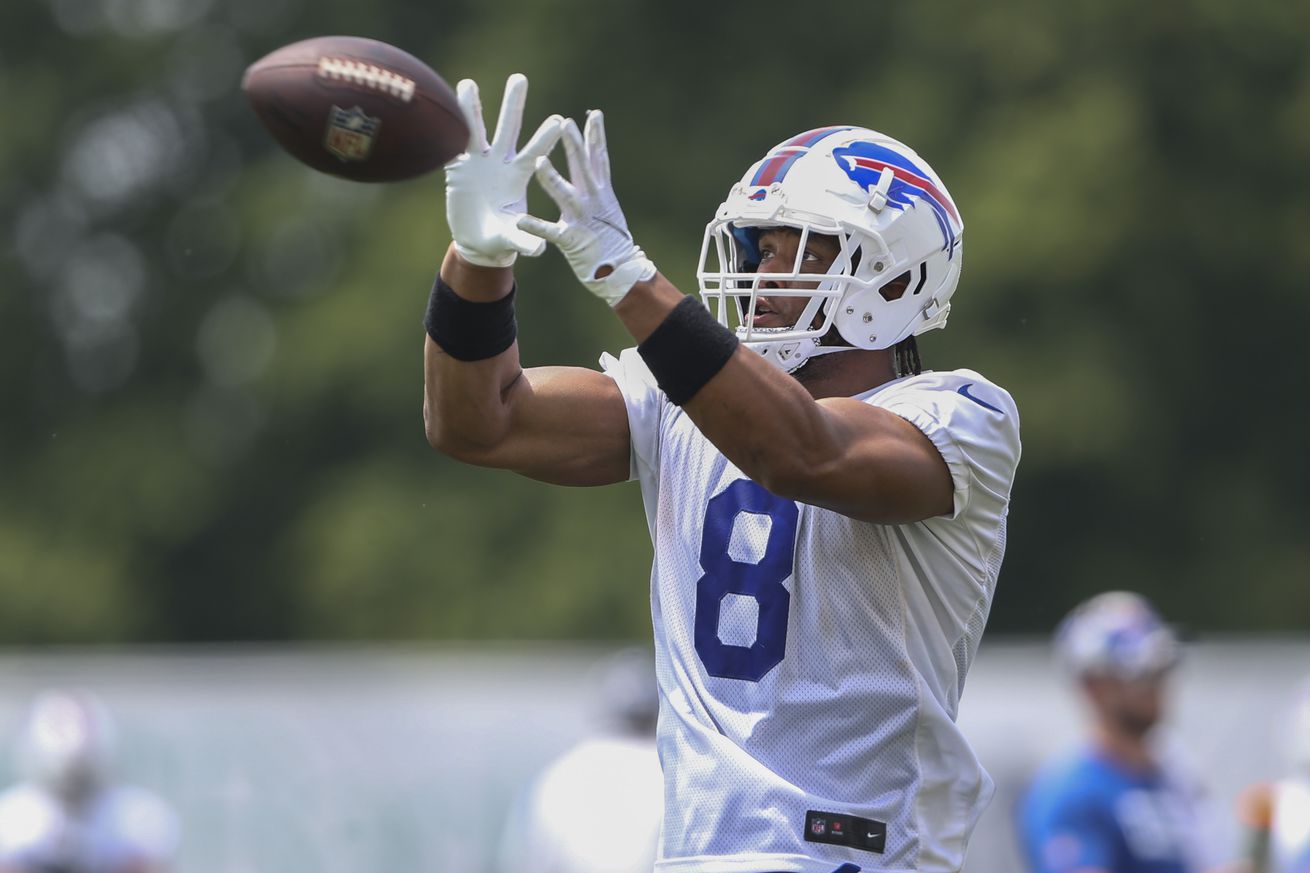
Some things matter and some things don’t
Football is back.
Kind of.
Maybe.
Teams across the NFL have begun their spring voluntary Organized Team Activities (OTAs). Rookie minicamps are firmly in the rearview mirror. Mandatory minicamps are around the corner before the summer break.
Before you know it, training camp practice reports will be fast and furious, the hopium will be consumed en masse across the entire league, and your beloved Buffalo Bills will be featured on HBO’s “Hard Knocks.”
A lot of information comes out of the spring and summer practice sessions (and before too long, preseason games). Camp reports and media observations continue to drive meaningful traffic from fan bases eager to absorb any and all takeaways.
But what matters more, and what matters less?
Because of the seasonality of the sport, fans can be assured to learn a lesson one offseason and then immediately forget it, only to then have to re-learn it the following year. And so the cycle continues on.
So before we begin, let’s take stock in what we’ve already learned from the many years of Bills football (specifically in the McBeane era) we’ve observed. Here are some reminders of past lessons learned…
“When and with whom” matters more than “how”
“When” and “with whom” you play is more predictive of your roster and depth chart placement than “how” you play.
Former Bills quarterback A.J. McCarron led an awesome 24-point comeback against the Chicago Bears during the 2018 preseason finale. The fact that he was playing late in the preseason finale alongside Malachi Dupre and Keith Trowbridge mattered far more than the fact that he led the comeback. McCarron was traded to the at-the-time Oakland Raiders two days later for a fifth-round pick.
Tight end O.J. Howard signed a contract with the Bills in 2022 that had $3.195 million fully guaranteed. The typical “follow the money” trope when it comes to team opinion of a player didn’t win out, and Howard was released anyway prior to ever playing a regular-season snap for Buffalo. The only signs this release was coming were some camp observations that he looked slow and the fact that Howard was playing in the second half of the final Bills preseason game.
Last year, Zach Davidson got buzz as a potential TE3 replacement for Quintin Morris. When the preseason games showed Davidson playing well into the fourth quarter and Morris taking reps in the absence of Dawson Knox and Dalton Kincaid with the starters, that book and narrative quickly closed.
If a player is consistently taking reps alongside players not likely to make the team, that carries more weight than the fact that they may look good taking reps alongside other players not likely to make the team. This can be in practice. It can come during the preseason. But “when” and “with whom” a player plays shows what the coaching staff thinks of a player far more than a highlight reel from camp, scrimmage, or preseason game.
It’ll be interesting to keep this in mind for the 2025 version of the Bills, as Mitchell Trubisky and Mike White may be competing for one backup quarterback spot behind MVP Josh Allen. Who’s the final quarterback of those two taking snaps in the preseason? Who’s taking reps with Curtis Samuel and who’s taking reps with Stephen Gosnell (sorry Stephen)?
Spring splashes and summer fades
What receivers do prior to pads does not necessarily correlate with their final standing with the team.
Remember the spring of Dezmin Lewis? Buffalo’s former seventh-round pick earned rave reviews for his spring work in 2016. A size/speed specimen (6’4”, 214 pounds, 4.46 40-yard dash), Lewis looked good enough that there was talk about him earning the team’s third wide receiver spot behind then-starters Sammy Watkins and Robert Woods after the departures of Percy Harvin and Chris Hogan.
And then it just… didn’t happen. Lewis never translated that spring hype consistently through the summer and he wasn’t part of the team’s active roster — instead maintaining a practice squad position with a brief November call up before being released the next year.
This is not a one-off. Situations like this happen throughout the league and will continue to happen. Running routes on air with limited contact while padless is a very different game than playing football, and it shows up consistently with wide receivers who can make a splash in the spring and then fade in the summer.
Special teams matters
Apart from the “when/with whom” phenomenon, the most important thing about preseason games is who’s playing on special teams and when.
It’s difficult to get meaningful full-speed, full-contact special teams reps in practice. Coaching staffs are constantly trying to get more efficient with the limited time they have on the practice field, and getting full-contact goal-line reps tends to take priority over field-goal block snaps.
This is why the “first team” and “second team” special teams reps matter so much in the preseason. It’s been globally accepted that the final spots at multiple positions depend upon a player’s effectiveness in non-scrimmage snaps, and being able to play multiple phases of special teams increases that player’s likelihood of being able to make the team.
When you see a roster “surprise” at final cutdown day, it’s usually a special teams play, and better observation of who is playing with what unit on teams in the preseason can help us be less surprised (if that’s your thing).
…and that’s the way the cookie crumbles. I’m Bruce Nolan with Buffalo Rumblings. You can find me on Twitter and Instagram @BruceExclusive and look for new episodes of “The Bruce Exclusive” every Thursday on the Rumblings Cast Network — see more in my LinkTree!